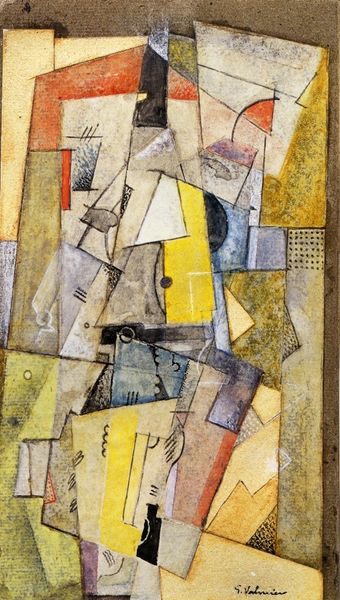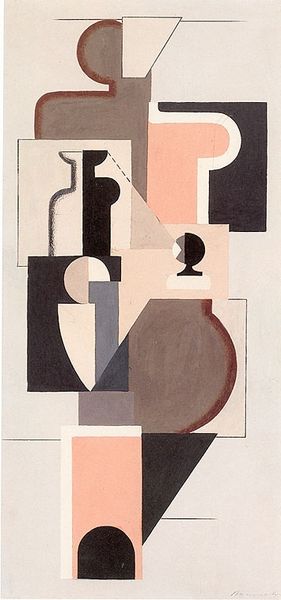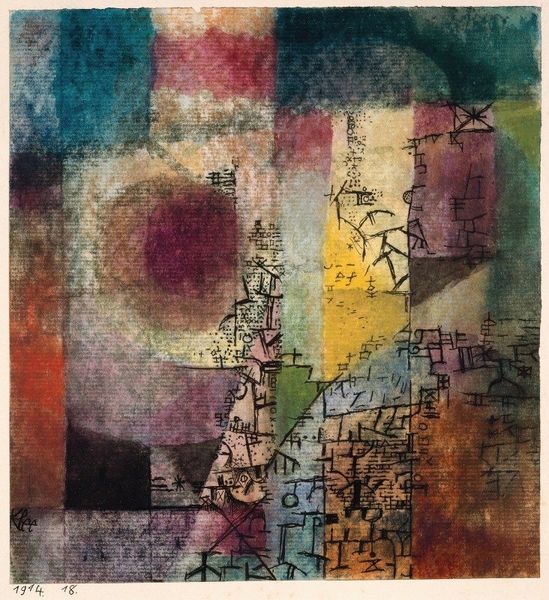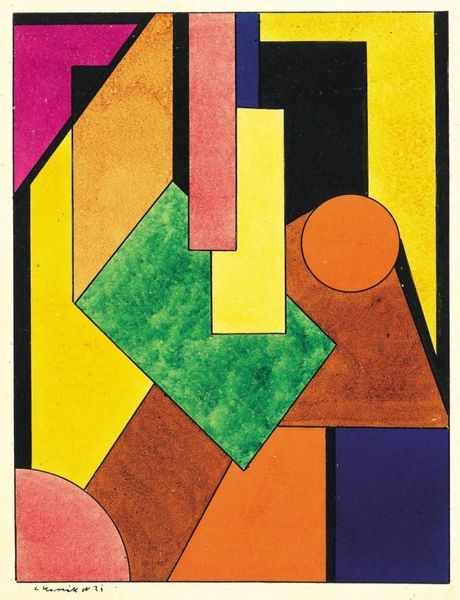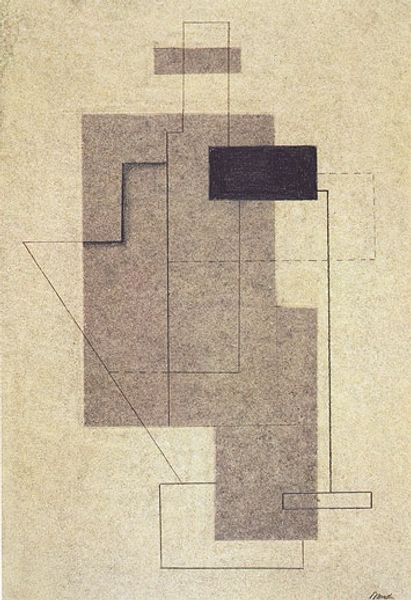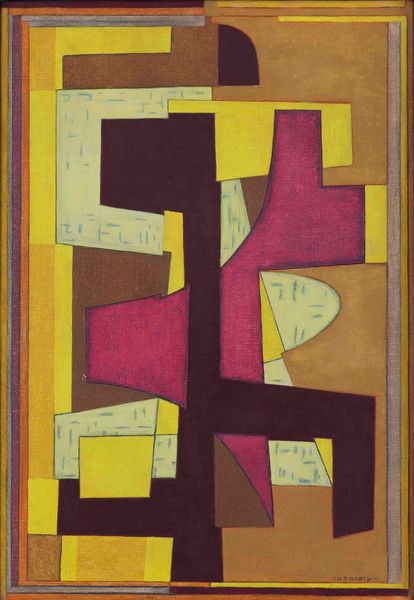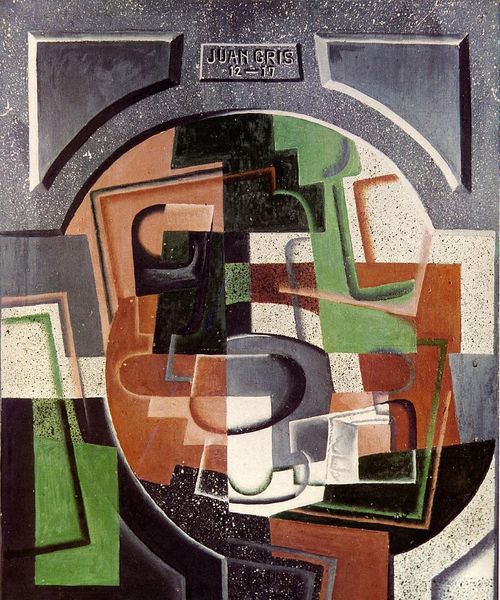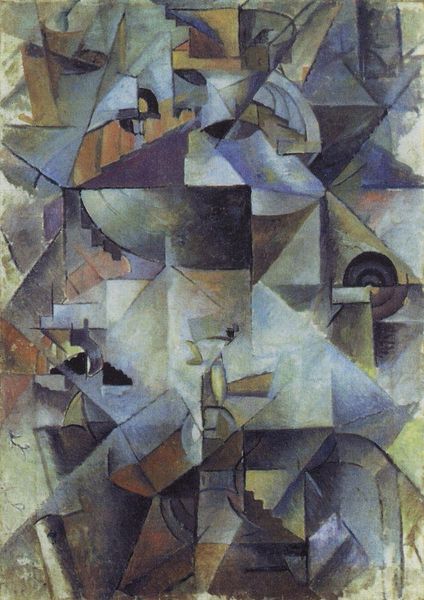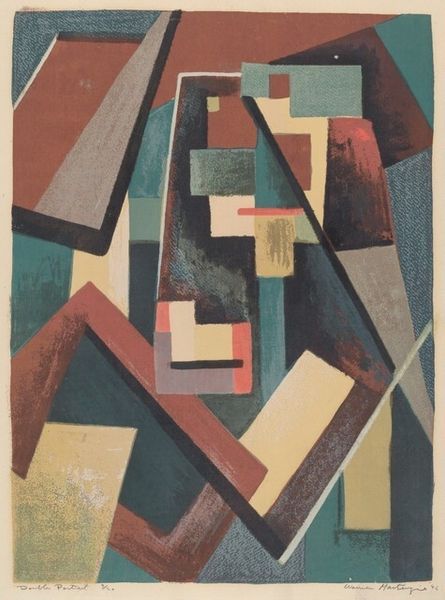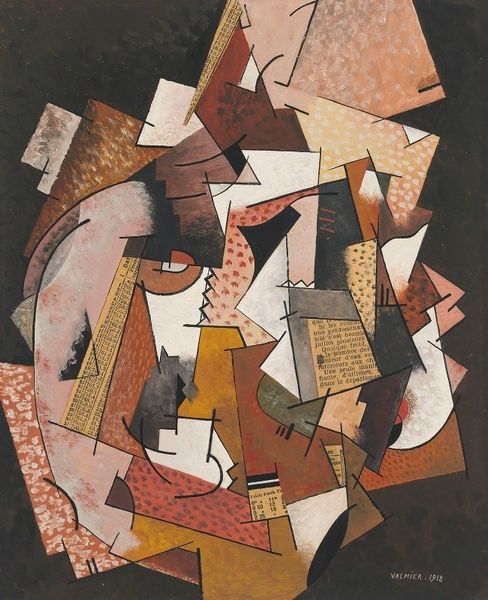
mixed-media, watercolor
#
cubism
#
mixed-media
#
water colours
#
form
#
watercolor
#
geometric-abstraction
#
abstract-art
#
line
#
bauhaus
#
mixed media
#
modernism
#
watercolor
Copyright: Sandor Bortnyik,Fair Use
Sándor Bortnyik made this watercolor geometric composition in 1922. Emerging from the avant-garde scene in Hungary, Bortnyik’s work reflects a broader European dialogue about the role of art in a rapidly changing society. Here, you see a convergence of geometric forms, circles, squares, and rectangles, rendered in muted tones. Note the interplay between these shapes, which creates a sense of depth and movement. This abstraction represents the utopian visions prevalent in the early 20th century. During this period, many artists believed that art could reshape society, aligning with socialist ideals of order and progress. Bortnyik's time spent in Vienna and Weimar further exposed him to new institutional models. The Bauhaus school, in particular, played a role in his vision. After his return to Hungary, Bortnyik founded his own school, mirroring the Bauhaus. To truly appreciate Bortnyik's contribution, explore archives from the Bauhaus and Hungarian art journals of the period. Only through this kind of historical research can we fully understand the political and social ambitions embedded in these abstract forms.
Comments
No comments
Be the first to comment and join the conversation on the ultimate creative platform.
